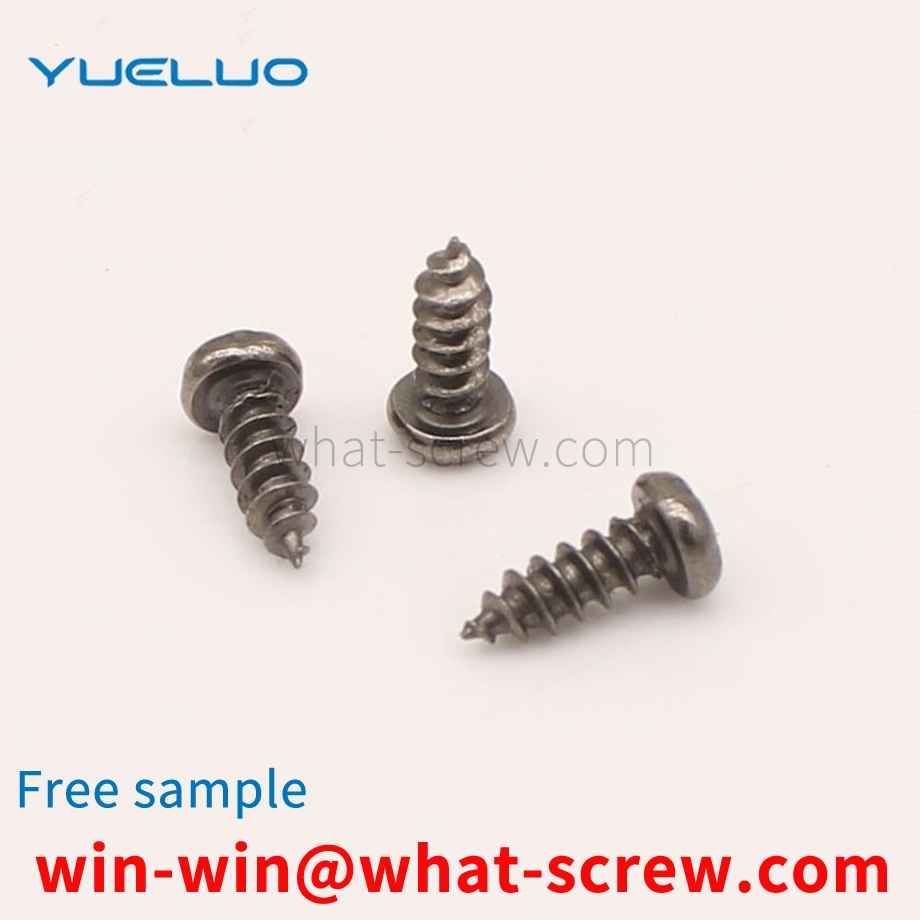What is the tolerance range of precision screws?
What is the tolerance range of precision screws?
Service Hotline
+86760-8787 8587We have more than ten years of experience in screw industry production. The main products are: DIN557 square nut, round head screw with pad, engineering construction screw, solid percussion rivet, headless stud, black zinc plated 304 stainless steel screw, cross mushroom nail umbrella Head extension bolts, pressure plate nuts, DIN582, square gaskets, gypsum board expansion screws, pressure block nuts, round double inner teeth, hexagonal lock nuts, sealed waterproof nuts and other fasteners, due to different product materials and specifications , the price is also different, please contact us if necessary.


double-headed pin puller includes a slider hammer and a sliding rod, two ends of the sliding rod are respectively provided with different types of pin-pulling parts, the pin-pulling parts are threadedly connected with the sliding rod, and the sliding rod is also provided with There is a sliding rod limit block, and the sliding rod is slidably connected with the slider hammer. The double-headed pin puller can install two types of pin-pulling heads at the same time, and can pull out two different types of pins. It is easy to use and has high work efficiency. Disadvantage: Single function, cannot be used to install pins.

Standards are norms, and each country and sector has its own standards. GB—Chinese National Standard (National Standard) ANSI—American National Standard (American Standard) DIN—German National Standard (German Standard) ASME—American Society of Mechanical Engineers Standard JIS—Japanese National Standard (Japanese Standard) BSW—British National Standard GB—National Standard The standard is one of the many standards in my country, and there are also industry standards, professional standards and department standards. National standards are divided into: GB (mandatory standards) and GB/T (recommended standards) and GBn (national internal standards) and so on. We usually see GB30, GB5783, etc. are mandatory standards. In addition to some basic dimensions such as head-to-side, head thickness, etc., the above standards are mainly different in the threaded part. The threads of GB, DIN, JIS, etc. are all in MM (millimeters), which are collectively referred to as metric threads. Another thread like ANSI, ASME, etc. is called American standard thread in inches. In addition to metric threads and American threads, there is also a BSW-imperial standard, whose threads are also in inches, commonly known as Wyeth threads. In the usual domestic sales business, the most common standards we encounter are GB (National Standard) and DIN (German Standard). In terms of production products, the following standards are mainly encountered: GB30; GB5783; GB5782; GB52; GB6170; GB818; GB819; GB845; GB846; GB70; DIN912; DIN933; DIN931 and so on. GB30 (old national standard) has been replaced by GB5783 (new national standard) in the standard book. GB52 (old national standard) has been replaced by GB6170 (new national standard) in the standard book.


Fig. 1, Fig. 2, and Fig. 3 show that the rivet nut is cut into the required blank from a chemically treated low carbon steel disc, and the blank is placed in the die, and the upper and lower punches are used for shaping to obtain a shaped blank. , and then put the shaped blank in the die, use the punch punch to cold-head out the required brim blank (1) and the deformed skirt (2), and then use the punch punch in the die to continue Cold heading out the brim blank (1) and the deformed skirt (2). Then put the semi-finished material into the concave die and use the punch of the punch to continue to squeeze the threaded hole (3) of the nut tapping skirt, and then put the semi-finished blank into the concave die and use the upper punch and the lower sleeve to drop it. material. There are fish teeth (6) below the brim; the outer side of the lower end of the threaded hole is provided with a chamfer (5); the cross-section of the thread of the inner wall of the threaded hole is an isosceles trapezoid, and the upper bottom of the trapezoid is a concave arc (4), In this way, the riveted object is firmly connected to the rivet nut.

If the above-mentioned nuts and screws are used as a kind of fasteners that can prevent others from being disassembled, such as when installing iron doors-steel windows, people usually tighten the nuts first, and then use a welding machine to weld the nuts and screws. To prevent the nut from loosening, it may be necessary to use a tool to mill the threads on the screw. It can be seen that this approach is very inconvenient.

The above content is uploaded by Yueluo or the Internet. If there is any copyright issue, please contact [email protected].

What is the tolerance range of precision screws?

How to choose the right stainless steel screw manufacturer?

Why is there an R angle under the head of the hexagon head s...

We have more than ten years of experience in the production ...

We have more than ten years of production experience in the ...

We have more than ten years of experience in screw industry ...

We have more than ten years of experience in screw industry ...